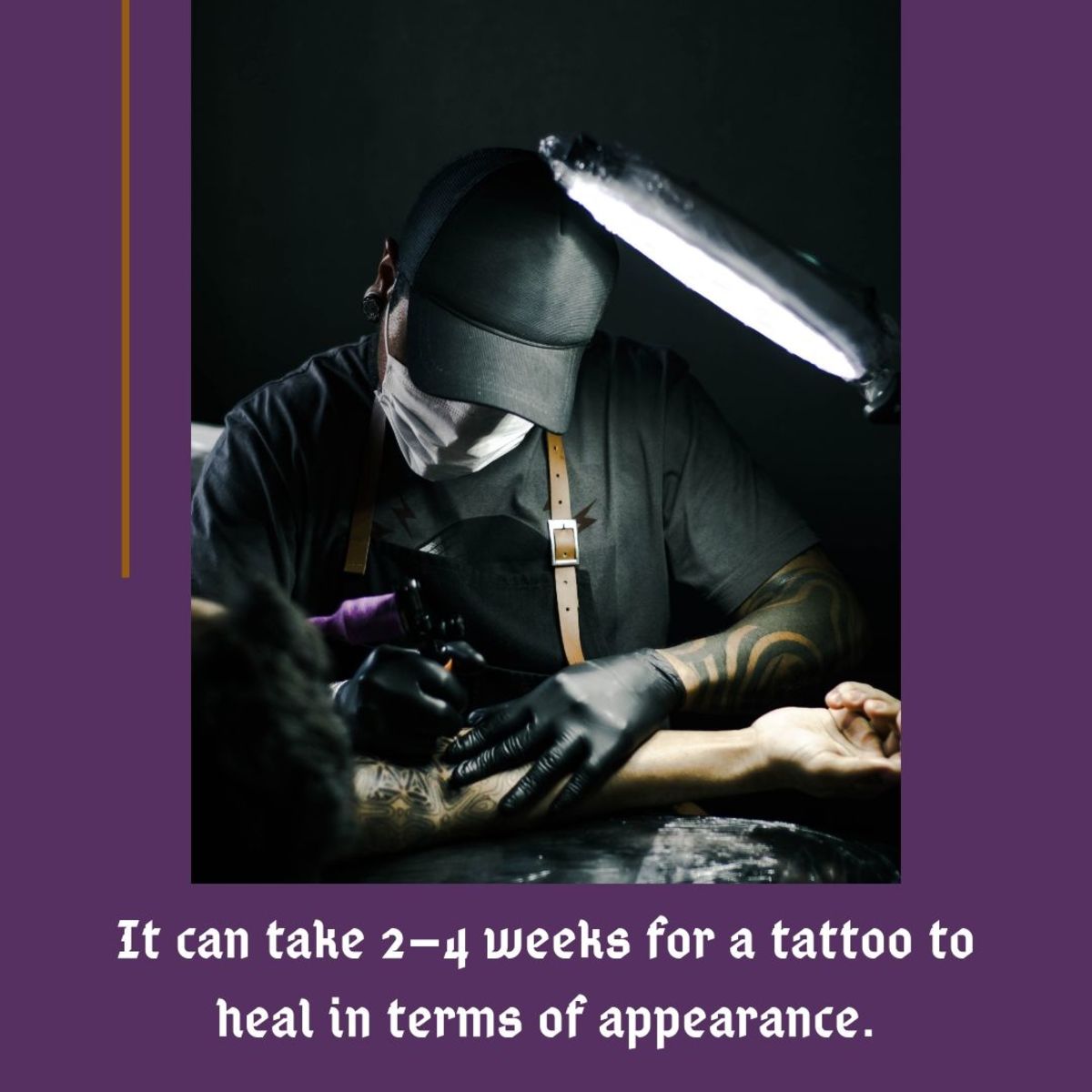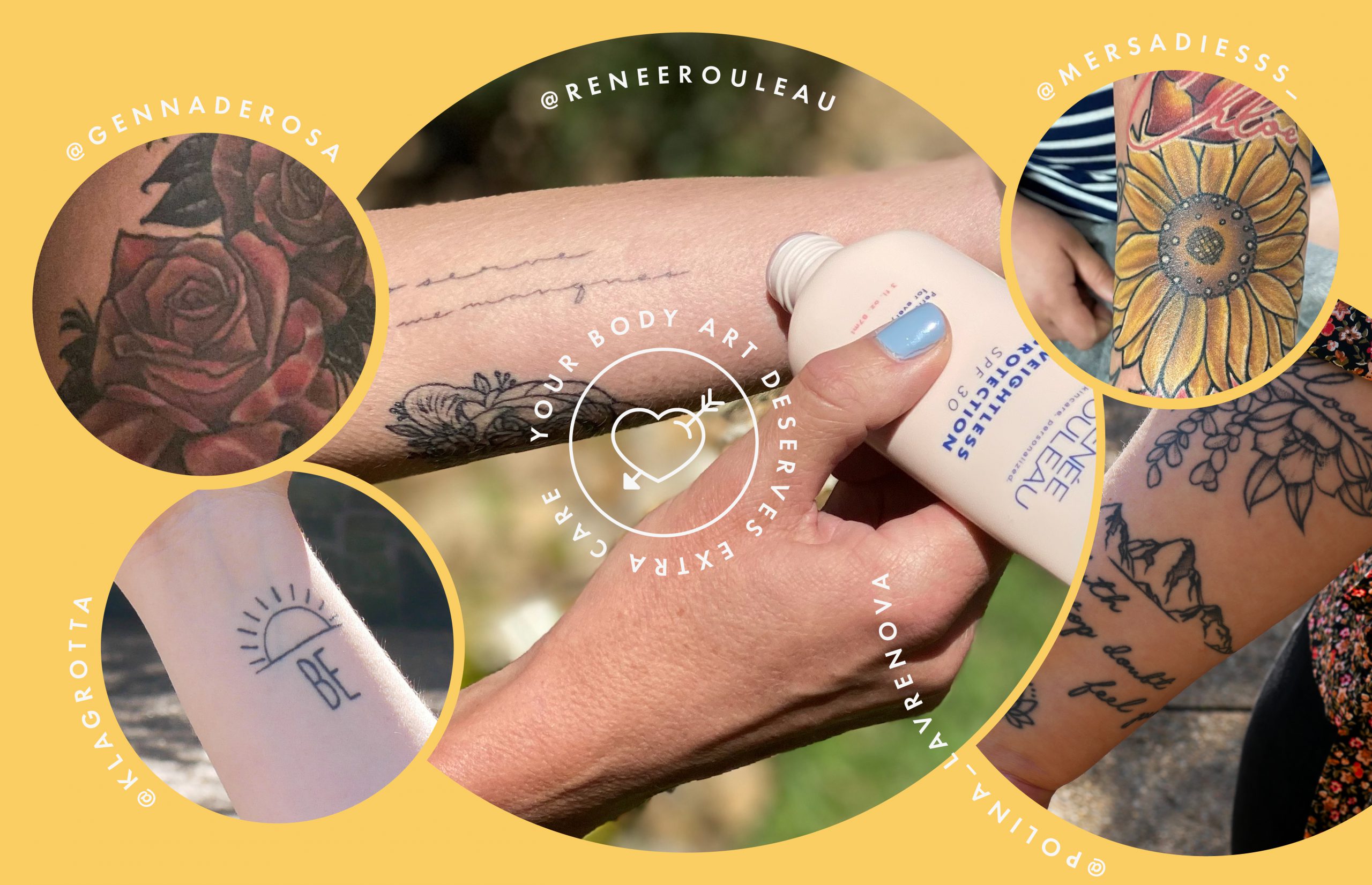
Okay, buckle up, tattoo enthusiasts! Let’s dive deep into the fascinating, and sometimes frustrating, world of tattoo healing and how your skin’s hydration (or lack thereof) can play a starring role.
Can Dry Skin Affect How a Small Tattoo Heals? A Deep Dive
A fresh tattoo is a beautiful commitment, a piece of art etched onto your skin. But it’s also an open wound, and just like any wound, it needs proper care to heal beautifully. One of the biggest factors influencing that healing process? You guessed it: the condition of your skin, specifically, whether it’s battling dryness.
1. The Tattoo Healing Timeline: A Quick Refresher
Before we jump into the dryness dilemma, let’s quickly recap the typical tattoo healing stages:
- Week 1: The Inflammatory Phase. Redness, swelling, and oozing are common. This is your body’s natural defense kicking in.
- Week 2: The Scabbing Phase. Scabs form to protect the wound as new skin cells are generated. Resist the urge to pick!
- Week 3: The Itchy Phase. The scabs start to flake off, and the itchiness can be intense. Moisturizing is key here.
- Week 4+: The Long Game. The outer layer of skin appears healed, but the deeper layers are still regenerating. Continued moisturizing is crucial.
2. The Dry Skin Dilemma: Why It Matters for Tattoo Healing
Now, let’s introduce our antagonist: dry skin. When your skin is parched, it becomes brittle, flaky, and less elastic. This can seriously throw a wrench into the tattoo healing process.
3. Impaired Skin Barrier: The First Line of Defense Breached
Your skin’s primary job is to act as a barrier, protecting you from external threats like bacteria and irritants. Dry skin compromises this barrier, making your fresh tattoo more vulnerable to infection.
4. Increased Risk of Infection: A Breeding Ground for Trouble
Cracked, dry skin provides tiny entry points for bacteria to sneak in. An infected tattoo can lead to prolonged healing, scarring, and even damage to the tattoo’s design. Nobody wants that!
5. Prolonged Healing Time: A Test of Patience
Dry skin slows down the cell regeneration process. When your skin is struggling to stay hydrated, it can’t efficiently produce new skin cells to close the wound, extending the healing time significantly.
6. Exaggerated Itching: The Itch That Just Won’t Quit
Dry skin intensifies the itchiness associated with tattoo healing. This relentless itch can lead to scratching, which damages the delicate healing tissue and increases the risk of infection and scarring.
7. Scabbing Gone Wild: Thick, Unruly Crusts
Dry skin can lead to thicker, more stubborn scabs. These scabs are more likely to crack and pull on the surrounding skin, disrupting the healing process and potentially causing ink fallout.
8. Ink Fallout: Colors Fading Before Your Eyes
When scabs are prematurely removed (either through scratching or because they’re too dry and brittle), they can take ink with them. This results in patchy, faded areas in your tattoo, a phenomenon known as ink fallout.
9. Scarring: The Unwanted Souvenir
Dry skin increases the risk of scarring during tattoo healing. When the skin is constantly irritated and damaged, it can lead to the formation of raised or discolored scars, obscuring the tattoo’s design.
10. Choosing the Right Moisturizer: Your Healing Ally
So, what’s the solution? Hydration, hydration, hydration! But not just any moisturizer will do.
- Fragrance-Free and Dye-Free: Avoid anything with added fragrances or dyes, as these can irritate sensitive skin.
- Hypoallergenic: Opt for hypoallergenic formulas to minimize the risk of allergic reactions.
- Ointments vs. Lotions: In the early stages of healing, ointments like Aquaphor or petroleum jelly can provide a protective barrier. As the tattoo heals, switch to a lighter, non-comedogenic lotion.
- Natural Ingredients: Look for moisturizers with natural ingredients like shea butter, cocoa butter, or aloe vera, which can soothe and hydrate the skin.
11. Moisturizing Frequency: Finding the Sweet Spot
How often should you moisturize? It depends on your skin type and the environment. Generally, applying a thin layer of moisturizer 2-3 times a day is a good starting point. Avoid over-moisturizing, as this can also hinder healing.
12. Beyond Moisturizer: Hydration from Within
Don’t forget about internal hydration! Drinking plenty of water helps keep your skin hydrated from the inside out. Aim for at least 8 glasses of water a day, especially during the tattoo healing process.
13. Environmental Factors: Shielding Your Tattoo from the Elements
- Sun Protection: Sunlight can damage new tattoos and cause fading. Always apply a broad-spectrum sunscreen with an SPF of 30 or higher to your healed tattoo when exposed to the sun.
- Avoid Extreme Temperatures: Extreme heat or cold can dry out your skin. Try to avoid prolonged exposure to these conditions.
- Humidifiers: If you live in a dry climate, consider using a humidifier to add moisture to the air.
14. Listen to Your Body: Paying Attention to the Signs
Your skin will tell you what it needs. Pay attention to the signs of dryness, such as itching, flaking, and tightness. Adjust your moisturizing routine accordingly.
15. When to Seek Professional Help: Don’t Hesitate to Ask
If you suspect your tattoo is infected or if you’re experiencing any unusual symptoms, don’t hesitate to consult a doctor or dermatologist. Early intervention can prevent serious complications.
Conclusion: A Happy Tattoo is a Hydrated Tattoo
Dry skin can indeed affect how a small tattoo heals, increasing the risk of infection, prolonging healing time, and potentially damaging the tattoo’s appearance. By prioritizing hydration, choosing the right moisturizer, and protecting your tattoo from environmental factors, you can ensure a smooth and successful healing process, resulting in a vibrant and beautiful piece of art that you’ll cherish for years to come. Remember, a happy tattoo is a hydrated tattoo!
FAQs: Your Burning Tattoo Questions Answered
1. Can I use coconut oil on my healing tattoo?
Coconut oil can be a good option for some people due to its moisturizing and antimicrobial properties. However, it can also clog pores for others. Test a small area first to see how your skin reacts.
2. Is it normal for my tattoo to peel?
Yes, peeling is a normal part of the tattoo healing process. It’s similar to a sunburn peeling. Just don’t pick at the peeling skin!
3. What happens if I accidentally scratch my tattoo?
If you accidentally scratch your tattoo, gently clean the area with antibacterial soap and water. Apply a thin layer of moisturizer and keep an eye out for any signs of infection.
4. How long does it take for a small tattoo to fully heal?
A small tattoo typically takes about 2-4 weeks to fully heal, but this can vary depending on individual factors and how well you care for it.
5. My tattoo is raised in some areas. Is this normal?
Slight raising is common during the initial healing phase. However, if the raising persists or is accompanied by redness, pain, or pus, it could be a sign of an allergic reaction or infection. Consult a doctor or dermatologist.















